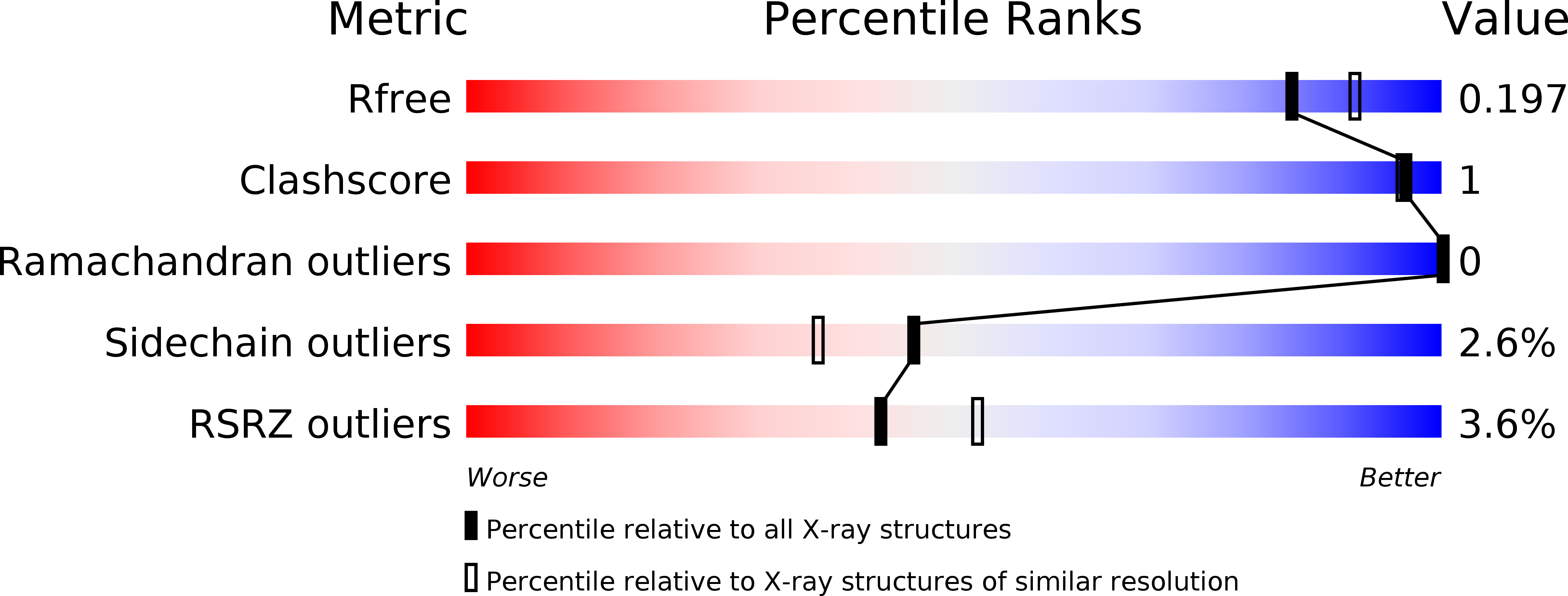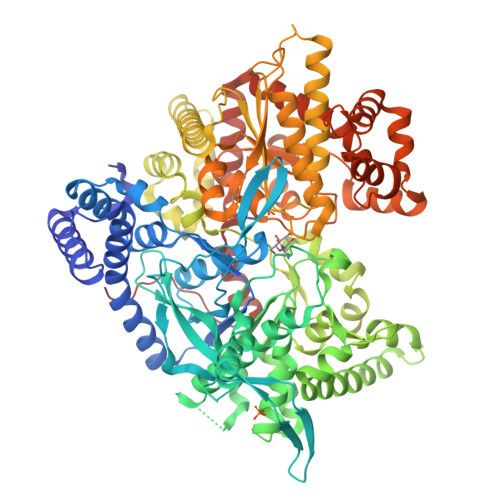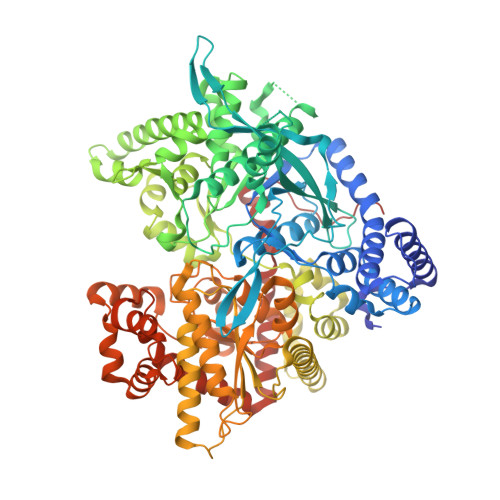Glucopyranosylidene-Spiro-Iminothiazolidinone, a New Bicyclic Ring System: Synthesis, Derivatization, and Evaluation for Inhibition of Glycogen Phosphorylase by Enzyme Kinetic and Crystallographic Methods.
Czifrak, K., Deak, S., Pahi, A., Kover, K.E., Docsa, T., Gergely, P., Alexacou, K.M., Papakonstantinou, M., Leonidas, D.D., Zographos, S.E., Chrysina, E.D., Somsak, L.(2014) Bioorg Med Chem 22: 4028
- PubMed: 25009003
- DOI: https://doi.org/10.1016/j.bmc.2014.05.076
- Primary Citation of Related Structures:
4CTM, 4CTN, 4CTO - PubMed Abstract:
The reaction of thiourea with O-perbenzoylated C-(1-bromo-1-deoxy-β-D-glucopyranosyl)formamide gave the new anomeric spirocycle 1R-1,5-anhydro-D-glucitol-spiro-[1,5]-2-imino-1,3-thiazolidin-4-one. Acylation and sulfonylation with the corresponding acyl chlorides (RCOCl or RSO₂Cl where R=tBu, Ph, 4-Me-C₆H₄, 1- and 2-naphthyl) produced the corresponding 2-acylimino- and 2-sulfonylimino-thiazolidinones, respectively. Alkylation by MeI, allyl-bromide and BnBr produced mixtures of the respective N-alkylimino- and N,N'-dialkyl-imino-thiazolidinones, while reactions with 1,2-dibromoethane and 1,3-dibromopropane furnished spirocyclic 5,6-dihydro-imidazo[2,1-b]thiazolidin-3-one and 6,7-dihydro-5H-thiazolidino[3,2-a]pyrimidin-3-one, respectively. Removal of the O-benzoyl protecting groups by the Zemplén protocol led to test compounds most of which proved micromolar inhibitors of rabbit muscle glycogen phosphorylase b (RMGPb). Best inhibitors were the 2-benzoylimino- (Ki=9μM) and the 2-naphthoylimino-thiazolidinones (Ki=10 μM). Crystallographic studies of the unsubstituted spiro-thiazolidinone and the above most efficient inhibitors in complex with RMGPb confirmed the preference and inhibitory effect that aromatic (and especially 2-naphthyl) derivatives show for the catalytic site promoting the inactive conformation of the enzyme.
Organizational Affiliation:
Department of Organic Chemistry, University of Debrecen, POB 20, H-4010 Debrecen, Hungary.





















